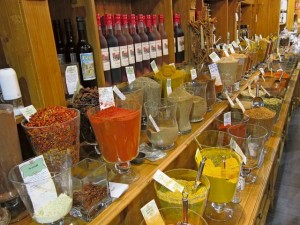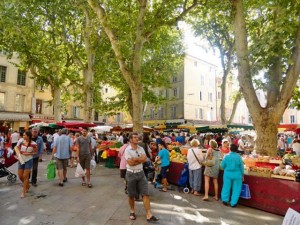A stroll through a farmers market can sensationalize a spring Saturday. Truly a traveling adventure, these places unite locals and tourists in their search for colorful produce, aromatic spices, artisan products and a sense of community.

The form and experience of farmers markets has shifted across urban development. Prior to the Industrial Age, producers sold their items directly to the market. Increased access to trading centers and ports created the notion of a single retailer offering consumers one place to find their desired goods, making access less demanding. As goods became more affordable, products sourced from longer distances could more easily get into a consumer’s hands.
In recent years, exponential growth has been observed in local farmers markets in the United States. In 1994, 1,755 known markets existed. In 2013, 8,144 were counted, according to the U.S. Department of Agriculture. A 3.6 percent increase was noted from 2012 to 2013.
Similarly, popular markets can be found in many towns and urban areas through Europe.
Vendors, communities and consumers reap the benefits of farmers markets. Commerce flows back into the local community, farmers have more profit with less overhead costs, consumers obtain fresh, organic food at lower prices, and people have a safe place to socialize in nature. Think farmers markets are more expensive? In 2010, a report found that, on average, food items were 40 percent less expensive when shopping at a farmers market.

Farmers markets can be enjoyed locally. They are a gem to experience while traveling. So, what are you doing this Saturday? Enjoy the process of searching for seasonal fare at any tasty farmers market where you live or plan to travel.
Tips for market shoppers:
• Look, but don’t touch. In most markets outside the states, you tell (or point if you don’t speak a common language) the cashier what you’d like and he or she will pick up the item for you. It is considered intrusive for you to touch items, particularly produce.
• Bring your own bags. It is not only considered environmentally friendly, but often the seller won’t have a bag for your purchases.

• Heighten your situational awareness. At some markets it is not polite to take large cameras into the market and snap pictures of the goods. Be aware of the cultural tone, and double check with the nonverbal impression your camera, volume of voice or large backpack has on those around you. Since most locals can pinpoint a newcomer as a tourist, it is likely thieves will as well. Markets are the primary place for small time pickpockets to earn their living.
• Intentionally bargain. Decide if you want something and how much you have or want to spend on it. I have wasted a lot of mental energy trying to figure out if I was being taken advantage of. I have learned to focus on my own personal connection or desire for the item when guiding my price point. Bargaining is like buying art; if you really like and can afford the item, focus on that rather than getting the price point upper hand.
• Live in the moment. Market finds are meant to be savored in the present. Find one item to eat at the market itself. Most produce should be eaten and enjoyed within three days.


